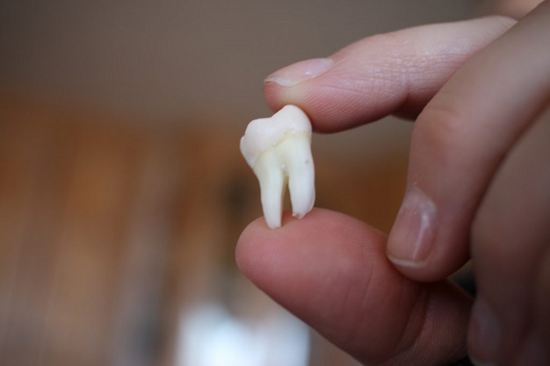Contents
Getting Braces a Second Time is Worth It
Getting braces can be a significant investment of time and money, but it can also be rewarding to have a beautiful, healthy smile. However, if you’ve had braces before and are considering getting them again, you may be wondering if it’s worth the effort. In this blog post, we’ll explore the reasons why you might need braces for the second time and whether it’s the right decision for you.
Reasons to Get Braces Again
There are a number of reasons why a person might require braces for a second time.
One common reason is that your teeth may have shifted since your last orthodontic treatment. This can occur naturally over time or as a result of not following your retainer instructions.
Another reason to consider additional orthodontic treatment is if the first treatment was not enough to correct the issue. This may be due to a variety of factors, such as the severity of the problem or the amount of time that the braces were worn. Moreover, there are a variety of new orthodontic treatments available since the first time you had braces. These new treatments may be more effective or less invasive than previous options.
Finally, it is important to note that orthodontic treatment is not just about straightening teeth. It can also help improve the function of your bite and jaw, leading to better overall oral health. As such, even if your teeth appear straight, it may still be worth considering a second round of braces to ensure that your bite is properly aligned.
Benefits of Getting Braces Again
While getting braces again may seem like a daunting and time-consuming task, the benefits that come with straightening your teeth are numerous. Not only can it enhance the overall appearance of your smile, but it can also improve your oral health. When teeth are misaligned, it can be difficult to properly clean them, leading to a buildup of plaque and bacteria. This can ultimately result in cavities and gum disease, which can be both uncomfortable and expensive to treat. However, by straightening your teeth, you can make cleaning easier and more effective, reducing your risk of developing these issues.
Moreover, having a well-aligned bite can also improve your overall quality of life. When your teeth fit together properly, it can alleviate jaw pain and headaches that are often associated with misaligned bites. By correcting your bite, you can also reduce the likelihood of experiencing related symptoms such as ear pain or neck pain. So, while getting braces again may seem like a significant investment, the long-term benefits that come with it are well worth it.
Does Getting Braces Twice Negatively Affect Your Health?
There is no evidence to suggest that getting braces twice negatively affects your health. In fact, getting braces again can improve your oral health by correcting any shifting or misalignment that may have occurred since your last treatment. This is particularly important because any misalignment or shifting could lead to biting or chewing problems, which in turn could result in other oral health issues such as tooth decay, gum disease, or even jaw pain.
By improving the function of your bite and jaw, orthodontic treatment can also lead to better overall oral health. Furthermore, orthodontic treatment can have a positive impact on your self-esteem and confidence, which can in turn lead to better overall mental health and well-being.
Getting braces for the second time may differ from the first time. Although the general process and experience should be similar, there are factors that may affect the treatment. For instance, the severity of the issue being addressed may vary, and it could have an impact on the length of time that the braces need to be worn. Additionally, considering that the patient has already undergone the treatment, the orthodontist may take a different approach. They may decide to use a different type of braces, or they may suggest additional procedures to achieve better results. It’s essential to consult with an orthodontist to determine the specific details of your treatment plan and make the necessary adjustments to ensure the best outcome for your dental health.
The Cost of Getting Braces for the Second Time
The cost of getting braces for the second time can vary depending on a number of factors, such as the severity of the issue being addressed and the type of braces being used. However, it’s important to remember that the cost of not addressing misaligned teeth can be even greater in the long run, as it can lead to a variety of oral health issues that can be both uncomfortable and expensive to treat. If cost is a concern, many orthodontic offices offer financing options to help make treatment more affordable.
Alternatives to Braces
In case you are not sure if you want to get braces again, you may want to consider some alternatives.
One of these options is clear aligners, such as the well-known brand Invisalign. These aligners are made of a clear, removable plastic material that gradually shifts your teeth into their desired position. They have high aesthetics, which is such a bonus point compared to mental braces.
Another alternative to traditional braces is lingual braces. These function similarly to metal braces, but instead of being placed on the front of your teeth, they are placed on the back of your teeth, making them less visible. This is a great option for those who are concerned about the appearance of braces, but still want the benefits of orthodontic treatment.
However, it is important to keep in mind that these alternative treatments may not be as effective as traditional braces for everyone and may not be suitable for all patients. Before choosing an alternative option, it is best to consult with your dentist or orthodontist to determine if it is the right choice for you. Additionally, it is important to understand that these treatments may take longer to achieve desired results compared to traditional braces. Moreover, traditional braces come with a variety of options, including ceramic braces, which are less visible than metal braces and are more comfortable to wear.
Notes for the Second Time Wearing Braces
Discomfort During the Adjustment Period
One of the most significant factors to keep in mind when getting braces for the second time is the discomfort you may experience during the adjustment period. This period typically lasts a few days to a week. During this time, you may experience soreness, tenderness, or even pain in your teeth and gums. This is normal and should be expected. Over-the-counter pain relievers can help alleviate any discomfort, but be sure to consult with your orthodontist before taking any medication.
Oral Hygiene Routine
Maintaining excellent oral hygiene is essential when wearing braces. During your second time wearing braces, you need to be even more diligent in your oral hygiene routine. It’s essential to brush your teeth after every meal to prevent food from getting stuck in your braces, which can cause tooth decay and gum disease. Additionally, be sure to floss daily to remove any food debris and plaque from between your teeth and braces.
Follow Your Orthodontist’s Instructions
Your orthodontist will provide you with specific instructions for caring for your braces. It’s essential to follow these instructions carefully to ensure that your treatment is successful. Your orthodontist may recommend using specific oral hygiene products or avoiding certain foods. Additionally, be sure to attend all of your orthodontic appointments. Missing appointments can delay your treatment and lead to longer wearing times.
Wear a Retainer
Wearing a retainer is an important part of dental care. Retainers help maintain the results achieved through orthodontic treatment, such as braces or aligners. They are designed to keep teeth in their new positions and prevent them from shifting back to their original positions. It is recommended to wear a retainer for a specific amount of time, depending on the individual case. Neglecting to wear a retainer can result in teeth shifting back to their original positions, which can be frustrating and may require additional treatment. Therefore, it is crucial to follow the orthodontist’s instructions and wear retainers as prescribed.
Be Careful When Playing Sports
Playing sports is a great way to stay physically active and healthy, but it’s important to take precautions to protect your body from injuries. While playing sports, it’s not uncommon for people to accidentally hit their teeth against a hard surface, such as a ball, a piece of equipment, or even another player. This can cause serious damage to your teeth and gums, such as chipping, cracking, or even knocking them out completely. In addition to the physical pain and discomfort that this can cause, it can also lead to expensive dental bills and long-term oral health problems.
To prevent these issues, it’s important to take steps to protect your teeth while playing sports. One effective way to do this is by wearing a mouthguard, which is a protective device that covers your teeth and gums to absorb shock and reduce the risk of injury. Mouthguards are available in a variety of sizes and styles, so it’s easy to find one that fits comfortably and securely in your mouth.
Deciding whether to get braces for the second time is a personal decision that depends on your individual needs and goals. If you’re unhappy with the way your teeth have shifted since your last treatment or didn’t wear your retainer enough, getting braces again may be the right choice for you. However, if you’re hesitant to commit to traditional braces, there are alternative treatments available. Ultimately, the best way to determine the right course of action is to consult with an orthodontist, who can help you weigh the pros and cons of each option and make an informed decision.















